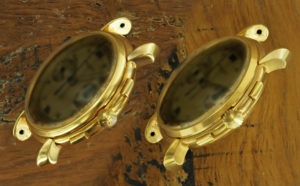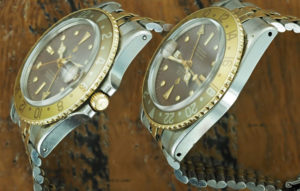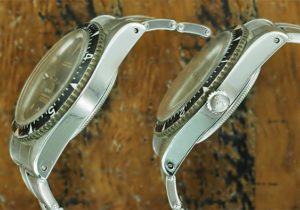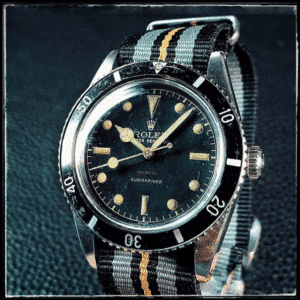
One question that prospect clients invariably ask me nowadays, whilst going through the process of assessing if a watch is worth buying or not, is: “is the case polished”? This question is legitimate, since the market demands higher prices for untouched watches so – fairly enough – they want to know how the price they are asked reflects the actual condition of the watch, if they are getting the most possible for their money and if the watch they may be about to buy has the prerogatives necessary to be easily re-sold at some point in the future, possibly performing as a good investment too.
Yet, when I hear the question I can’t help rolling my eyes, thinking how ironic it is that so many people expect to make a selective choice based on a difference they obviously cannot see and, occasionally, even understand. I mean, when people ask me if a Rolex GMT has “its super dome” crystal, or a Submariner from the late seventies the “stretch” Oyster bracelet and the “red triangle insert”, they obviously don’t know what they’re talking about. So they want a watch with prerogatives that do not exist or would not be consistent with what they are wanting to buy, just because they heard someone mentioning those items. Likewise, the want a watch that was never polished, mostly because they heard someone saying that that is something you must want.
I know that as long as you’ll just give the answer they want to hear, based on what they heard in some casual watch talk or read on an occasional visit to a collectors’ online forum, you will eventuality score a sale: and some

watch dealers will do just that. Conversely, if you give them an honest picture of the watch you are representing, explaining all the pros and the cons that make it a good collector’s piece altogether and actually a good deal in the bargain, next thing you know your prospect buyer will run to take the offer from the less honest guy.
Doing your homework every day can be boring at times, that’s out of the question, but if you want the reward that comes at the end, it is also an inevitable endeavor: you want to be a doctor, an architect or an attorney, there is no other way to access the stage and get that degree than going through all the motions involved. Trust me, you’re not getting that diploma from Harvard just asking around what a PhD is all about, and then showing up at the ceremony. If you want to be a true watch expert yourself, you need to devote many years to accomplish the goal, make a lot of mistakes and inevitably lose a lot of money, just like I and others like me have done. Or, you can decide to entrust a true professional to make the best choice for you. My advice is that if you are ill, want to remodel your home or need a good defense in a lawsuit, you better hire the most qualified and experienced doctor, architect or attorney money can buy: rather that look online or ask a multitude of amateurs, opinion makers, bloggers, aficionados and the like how your case ought to be handled, just so that you can at that point hire are a professional and tell him what needs to be done and how. This been said, let’s try to understand a little better what’s what and talk, this time, about where this “unpolished case” thing comes from, what it really represents and what it means in the evaluation of a vintage watch; why people would re-polish cases if everybody wants them unpolished anyway, and other fun stuff like that.
For Part II, click here.





 Whether you’re living through a multiple decade tradition… or even starting one yourself, this type of heirloom is symbolic of the legacy a family tree creates. If you’re starting the tradition in your own household, pick a watch that’s representative of your style and preference as well as your interests. The watch should be symbolic of who you are, even more importantly what your family name represents.
Whether you’re living through a multiple decade tradition… or even starting one yourself, this type of heirloom is symbolic of the legacy a family tree creates. If you’re starting the tradition in your own household, pick a watch that’s representative of your style and preference as well as your interests. The watch should be symbolic of who you are, even more importantly what your family name represents.